Resident Crews of the International Space Station (ISS)
![]()
ISS: Expedition 66 |
 |
 |
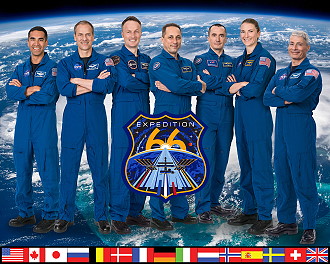 |
crew poster |
|
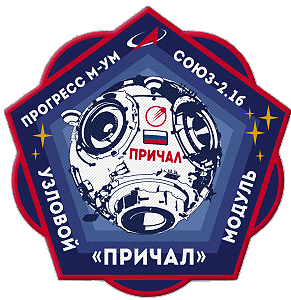 |
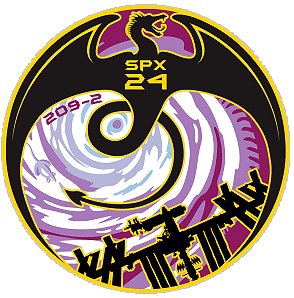 |
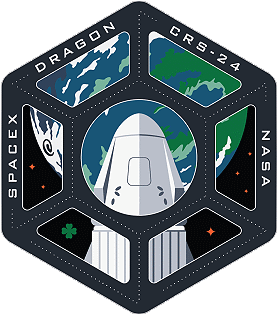 |
 |
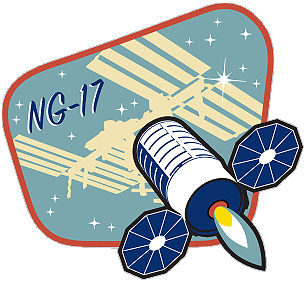 |
|
![]()
Crew, launch- and landing data
| No. | Nation | Surname | Given names | Position | Spacecraft (launch) |
Launch date |
Launch time |
Spacecraft (landing) |
Landing date |
Landing time |
Mission duration |
Orbits |
| 1 | Pesquet | Thomas Gautier | ISS-CDR | SpaceX Crew-2 | 23.04.2021 | 09:49:02.397 UTC | SpaceX Crew-2 | 09 11.2021 | 03:33:15 UTC | 199d 17h 44m 13s | 3194 | |
| 2 | Kimbrough | Robert Shane | Flight Engineer-14 | SpaceX Crew-2 | 23.04.2021 | 09:49:02.397 UTC | SpaceX Crew-2 | 09 11.2021 | 03:33:15 UTC | 199d 17h 44m 13s | 3194 | |
| 3 | McArthur | Katherine Megan | Flight Engineer-15 | SpaceX Crew-2 | 23.04.2021 | 09:49:02.397 UTC | SpaceX Crew-2 | 09 11.2021 | 03:33:15 UTC | 199d 17h 44m 13s | 3194 | |
| 4 | Hoshide | Akihiko | Flight Engineer-16 | SpaceX Crew-2 | 23.04.2021 | 09:49:02.397 UTC | SpaceX Crew-2 | 09 11.2021 | 03:33:15 UTC | 199d 17h 44m 13s | 3194 | |
| 5 | Dubrov | Pyotr Valerievich | Flight Engineer-5 | Soyuz MS-18 | 09.04.2021 | 07:42:40.496 UTC | Soyuz MS-19 | 30.03.2022 | 11:28:01.2 UTC | 355d 03h 45m 21s | 5680 | |
| 6 | Vande Hei | Mark Thomas | Flight Engineer-6 | Soyuz MS-18 | 09.04.2021 | 07:42:40.496 UTC | Soyuz MS-19 | 30.03.2022 | 11:28:01.2 UTC | 355d 03h 45m 21s | 5680 | |
| 7 | Shkaplerov | Anton Nikolayevich | ISS-CDR * | Soyuz MS-19 | 05.10.2021 | 08:55:02.442 UTC | Soyuz MS-19 | 30.03.2022 | 11:28:01.2 UTC | 176d 02h 32m 59s | 2759 | |
| 8 | Chari | Raja Jon Vurputoor "Grinder" | Flight Engineer-10 | SpaceX Crew-3 | 11.11.2021 | 02:03:30 UTC | SpaceX Crew-3 | 06.05.2022 | 04:43:23 UTC | 176d 02h 39m 53s | 2832 | |
| 9 | Marshburn | Thomas Henry "Tom" | Flight Engineer-11 | SpaceX Crew-3 | 11.11.2021 | 02:03:30 UTC | SpaceX Crew-3 | 06.05.2022 | 04:43:23 UTC | 176d 02h 39m 53s | 2832 | |
| 10 | Maurer | Matthias Josef | Flight Engineer-13 | SpaceX Crew-3 | 11.11.2021 | 02:03:30 UTC | SpaceX Crew-3 | 06.05.2022 | 04:43:23 UTC | 176d 02h 39m 53s | 2832 | |
| 11 | Barron | Kayla Sax | Flight Engineer-12 | SpaceX Crew-3 | 11.11.2021 | 02:03:30 UTC | SpaceX Crew-3 | 06.05.2022 | 04:43:23 UTC | 176d 02h 39m 53s | 2832 | |
| 12 | Artemyev | Oleg Germanovich | Flight Engineer-1 | Soyuz MS-21 | 18.03.2022 | 15:55:18.451 UTC | Soyuz MS-21 | 29.09.2022 | 10:57:12.8 UTC | 194d 19h 01m 54s | 3120 | |
| 13 | Matveyev | Denis Vladimirovich | Flight Engineer-2 | Soyuz MS-21 | 18.03.2022 | 15:55:18.451 UTC | Soyuz MS-21 | 29.09.2022 | 10:57:12.8 UTC | 194d 19h 01m 54s | 3120 | |
| 14 | Korsakov | Sergei Vladimirovich | Flight Engineer-3 | Soyuz MS-21 | 18.03.2022 | 15:55:18.451 UTC | Soyuz MS-21 | 29.09.2022 | 10:57:12.8 UTC | 194d 19h 01m 54s | 3120 |
* since November 06, 2021 Anton Shkaplerov replaced Thomas Pesquet as ISS-CDR
 |
Expedition Report
|
ISS Expedition 66 began with the undocking of Russian
spacecraft Soyuz
MS-18 on October 17, 2021 at 01:14
UTC. The landing crew consisted of Oleg Novitsky, Klim Shipenko and Yulia Peresild. Three-and-a-half-hours later the crew landed safely in Kazakhstan. So, the new Expedition 66 consisted of ISS Commander Thomas Pesquet, Pyotr Dubrov, Mark Vande Hei, Anton Shkaplerov, Shane Kimbrough, Megan McArthur and Akihiko Hoshide. The Progress MS-17 spacecraft undocked from the space station at 23:42:27 UTC on October 20, 2021. After undocking from the station's Poisk module, Progress MS-17 backed out to a distance of 120 miles (193 kilometers) from the space station for a period of just over 24 hours to allow for station keeping. The spacecraft then made an automated docking at 04:21:07 UTC on October 22, 2021 to the Nauka Multipurpose Laboratory Module. The maneuver will position Progress MS-17 to conduct leak checks of the Nauka module's propellant lines before they are used with the new module's thrusters for orientation control of the station. Progress MS-17 arrived at the station in July 2021 and will depart in late November 2021. The new Progress MS-18 cargo craft will launch from the Baikonur Cosmodrome in Kazakhstan at 00:00:32 UTC on October 28, 2021. Loaded with almost three tons of food, fuel, and supplies for the station crew, the resupply ship docked to the aft port of the Zvezda service module at 01:31:19 UTC on October 30, 2021. The launch of the unpiloted Russian Progress MS-18 occurred on October 28, 2021 at 00:00:32.525 UTC from the Baikonur Cosmodrome in Kazakhstan. The freighter delivers almost two-and-half tons material. It transports space experimentation, medical inspection and hygiene and hygiene items, clothing, standard food rations and good food for the crew members of this expedition. The Progress MS-18 spacecraft docked to the Zvezda module at the Russian segment on October 30, 2021 at 01:31:19 UTC. Progress MS-18 will remain docked at the station for five months before departing in May 2022 for its deorbit into Earth's atmosphere. The European astronaut Thomas Pesquet passed on command of the International Space Station to the Russian cosmonaut Anton Shkaplerov on November 06, 2021. On November 08, 2021 at 19:05 UTC, SpaceX Crew-2 Endeavour undocked from the International Space Station with astronauts Shane Kimbrough, Megan McArthur, Akihiko Hoshide and Thomas Pesquet on board and splashed down at 03:33 UTC on November 09, 2021 off the coast of Florida. On November 10, 2021 an ISS reboost was performed using Progress MS-18 thrusters. This reboost was to set to avoid a piece of space junk. The engines started at 20:15 UTC and fired 360 seconds. After the corrective maneuver, the average orbit of the ISS increased by 1,200 meters. The actual parameters are 417.94 km x 438.39 km. The ISS needs 92.927 minutes for each orbit. The SpaceX Crew-3 mission launched on November 11, 2021 from Launch Complex 39-A at NASA's Kennedy Space Center in Florida. This is the third crew rotation flight of the SpaceX Crew Dragon spacecraft on a Falcon 9 rocket following certification by NASA for regular flights to the space station as part of the agency's Commercial Crew Program. The SpaceX Crew-3 Endurance carried Crew Dragon Commander Raja Chari, Pilot Thomas Marshburn, Mission Specialist Matthias Maurer from European Space Agency (ESA) and Mission Specialist Kayla Barron to the space station for a six-month science mission. The Crew Dragon docked to the International Space Station on November 11, 2021. Northrop Grumman's uncrewed Cygnus NG-16 spacecraft departed the International Space Station on November 20, 2021, after delivering nearly 8,000 pounds (3,630 kg) of supplies, scientific investigations, commercial products, hardware, and other cargo to the orbital laboratory. Northrop Grumman named the spacecraft after the late NASA astronaut Ellison Onizuka. Flight controllers on the ground sent commands for the space station's Canadarm2 robotic arm to detach Cygnus from the Unity module's Earth-facing port. The arm then maneuvered the spacecraft into position and released it at 16:01:30 UTC. Matthias Maurer monitored Cygnus' systems upon its departure from the space station. After departure, the Kentucky Re-Entry Probe Experiment (KREPE) stowed inside Cygnus will take measurements to demonstrate a thermal protection system for spacecraft and their contents during re-entry in Earth's atmosphere, which can be difficult to replicate in ground simulations. Cygnus then performed a deorbit engine firing to set up a destructive re-entry in which the spacecraft, filled with waste the space station crew packed, burned up in Earth's atmosphere. The five-ton Prichal docking module and its modified, uncrewed Russian Progress (Progress M-UM) delivery spacecraft launched atop a Soyuz 2.1b booster from the Baikonur Cosmodrome in Kazakhstan 13:06:36 UTC on November 24, 2021. After separating from the Soyuz rocket's upper stage, Progress transported Prichal for an automated docking with the space station's Nauka multipurpose laboratory module two days later, at 15:19:39 UTC on November 26, 2021. Prichal, named for the Russian word for port or berth, has five available docking ports to accommodate multiple Russian spacecraft and provide fuel transfer capability to the Nauka module. The docking compartment has an internal volume of 14 cubic meters. To make room for Prichal, the recently relocated, uncrewed Progress MS-17 cargo craft undocked from Nauka at 11:22:30 UTC on November 25, 2021 and followed a path to burn up upon reentry in the Earth's atmosphere. The modified Progress transport spacecraft that guided Prichal to the station will detach from Prichal in late December 2021 and burn up during reentry over the Pacific Ocean. On December 02, 2021 Thomas Marshburn and Kayla Barron performed a spacewalk (6h 32m) to replace a faulty Communications Antenna on International Space Station. Thomas Marshburn and Kayla Barron worked at the Port 1 (P1) truss structure, where the antenna is mounted. The antenna recently lost its ability to send signals to Earth via NASA's Tracking and Data Relay Satellite System. Although its degradation has had limited impact on station operations, mission managers decided to install a new antenna to ensure communications redundancy. The space station has additional low-rate S-band systems, as well as the high-rate KU-band communications system that relays video. Throughout the spacewalk, Thomas Marshburn positioned himself at the end of the Canadarm2 robotic arm, working in tandem with Kayla Barron. Astronaut Matthias Maurer of ESA (European Space Agency) controlled the robotic arm from inside the space station. On December 03, 2021 an unplanned ISS reboost was performed using Progress MS-18 thrusters. This reboost was to set to avoid a piece of space junk coming from a Pegasus rocket. The engines started at 07:58 UTC and fired 160.9 seconds. After the corrective maneuver, the average orbit of the ISS decreased by 300 meters. The actual parameters are 420.30 km x 434.84 km. The ISS needs 92.91 minutes for each orbit. Soyuz MS-20 with the visiting crew Aleksandr Misurkin, Yusaku Maezawa and Yozo Hirano docked to the International Space Station on December 08, 2021 at 13:40 UTC. The spacecraft was launched on the same day at 07:38:15.584 UTC from the cosmodrome Baikonur. Soyuz MS-20 undocked from the International Space Station on December 19, 2021 at 23:50 UTC and landed three-and-a-half hours later in the steps of Kazhakstan. SpaceX's 24th Commercial Resupply Services mission (Dragon SpX-24 or CRS-24) launched on December 21, 2021 at 10:07:08 UTC on a Falcon 9 rocket from Launch Complex 39A at NASA's Kennedy Space Center in Florida. Dragon carried 6,500 pounds (2,950 kg) research, logistics and hardware for the Expedition 66/67 crew including a variety of NASA investigations, such as a protein crystal growth study that could improve how cancer treatment drugs are delivered to patients and a handheld bioprinter that could one day be used to print tissue directly onto wounds for faster healing. There are also experiments from students at several universities as part of the Student Payload Opportunity with Citizen Science (SPOCS) program and an investigation from the makers of Tide that examines detergent efficacy in microgravity. About 12 minutes after launch, Dragon separated from the Falcon 9 rocket's second stage and began a carefully choreographed series of thruster firings to reach the space station. Arrival to the station was on December 22, 2021. Dragon docked autonomously to the forward-facing port of the station's Harmony module, with NASA astronauts Raja Chari and Thomas Marshburn monitoring operations from the station. The modified Progress M-UM transport spacecraft that guided Prichal to the station detached from Prichal on December 22, 2021 and burned up next day during reentry over the Pacific Ocean. On December 24, 2021 an ISS reboost was performed using Progress MS-18 thrusters. This reboost was to set to set the ballistic conditions for the launch of Soyuz MS-21 and the landing of Soyuz MS-19. The engines started at 01:18 UTC and fired 544 seconds. After the corrective maneuver, the average orbit of the ISS decreased by 1.800 meters. The actual parameters are 415.63 km x 433.15 km. The ISS needs 92.86 minutes for each orbit. On January 12, 2022 an ISS reboost was performed using Progress MS-18 thrusters. This reboost was to set to set the ballistic conditions for the launch of Soyuz MS-21 and the landing of Soyuz MS-19. The engines started at 18:24 UTC and fired 395.4 seconds. After the corrective maneuver, the average orbit of the ISS increased by 1,200 meters. The actual parameters are 413.79 km x 437.37 km. The ISS needs 92.87 minutes for each orbit. Anton Shkaplerov and Pyotr Dubrov performed the first spacewalk in this year on January 19, 2022 (7h 11m). The main objective of the spacewalk was to integrate the Prichal node module, which arrived on the ISS at the end of November 2021, into the Russian segment of the ISS. The main tasks that had to be carried out by the Russian crew included the assembly of handrails between the Nauka and Prichal modules, the dismantling of covers and thermal insulation, and the connection of cables for the "Kurs-P" communication system between the Prichal and Nauka modules, the installation of the antennas AR-VKA / 2AR-VKA and 4AO-VKA, the connection of a TV cable between the modules Prichal and Nauka, the relocation of a TV camera, the installation of docking target points, the dropping of the cover of the 4AO-VKA -Antenna and two empty containers as well as the dismantling and dropping of the antennas 2ASF1-M-VKA No. 1, 2 and AO-753A. The "Prichal" node module is intended to increase the technical and operational capabilities of the Russian segment of the International Space Station. It is docked to the nadir unit of the Nauka multipurpose laboratory module. The further development of the Russian segment of the ISS will be ensured by docking with the node module of transport systems, including promising ones. The node module comprises a body and a complex of on-board systems, including a control system for on-board equipment, radio equipment, a system for ensuring a thermal regime, means for providing a gas composition, means of transport and navigation, transit lines for refueling, an active hybrid docking system, a passive hybrid docking system, means of recoupling. The module uses a passive system to ensure thermal conditions on heat pipes through automatic electrical heaters paired with electronic switches. NASA's SpaceX Dragon SpX-23 or CRS-23 cargo freighter, loaded with approximately 4,900 pounds (2,222 kg) of scientific experiments and other cargo from the International Space Station, departed on January 23, 2022, bound for a splashdown off the coast of Florida on January 23, 2022, completing the company's 23nd commercial resupply services mission for NASA. Ground controllers at SpaceX in Hawthorne, California, commanded Dragon to undock from the space-facing port on the station's Harmony module at 15:40:23 UTC. The cargo craft physically separated from the station five minutes later before firing its thrusters to move a safe distance away prior to a deorbit burn that will begin its re-entry into Earth's atmosphere. Dragon made its parachute-assisted splashdown at 21:05 UTC on January 24, 2022. Splashing down off the coast of Florida enables quick transportation of the science aboard the capsule to NASA's Space Station Processing Facility at the agency's Kennedy Space Center in Florida, and back into the hands of the researchers. This shorter transportation timeframe allows researchers to collect data with minimal sample exposure to gravity. Some of the scientific investigations Dragon returned to Earth include: Last light: A state-of-the-art light imaging microscope, the Light Microscopy Module (LMM) will return after about 12 years on the station. LMM, sponsored by NASA's Division of Biological and Physical Sciences, made it possible to observe and record the way matter is organized and moves on the microscopic level, and supported ground-breaking colloid research, plant studies, and thermophysics experiments. Tiny structures, assemble: The InSPACE-4 physics study is returning samples that could provide insight into how to harness nanoparticles to fabricate and manufacture new materials, including medical diagnostics and thermal shields for Earth and space applications. Cell signaling in microgravity: The ESA (European Space Agency) investigation Cytoskeleton contributes to understanding of how the human body responds to microgravity. The study could support development of countermeasures to help astronaut crew members maintain optimum health on future space missions. On February 08, 2022 an ISS reboost was performed using Progress MS-18 thrusters. This reboost was to set to set the ballistic conditions for the launch of Soyuz MS-21 and the landing of Soyuz MS-19. The engines started at 07:56 UTC and fired 142.3 seconds. After the corrective maneuver, the average orbit of the ISS increased by 450 meters. The actual parameters are 415.26 km x 439.21 km. The ISS needs 92.86 minutes for each orbit. The launch of the unpiloted Russian Progress MS-19 occurred on February 15, 2022 at 04:25:39.528 UTC from the Baikonur Cosmodrome in Kazakhstan. The freighter delivers almost three tons material. It transports space experimentation, medical inspection and hygiene and hygiene items, clothing, standard food rations and good food for the crew members of this expedition. The Progress MS-19 spacecraft docked to the Poisk module at the Russian segment on February 17, 2022 at 07:03:20 UTC. Progress MS-19 will remain docked at the station for several months before departing later in 2022 for its deorbit into Earth's atmosphere. Northrop Grumman launched its 17th resupply mission to the International Space Station on February 19, 2022 at 17:40:07.300 UTC from NASA's Wallops Flight Facility on Wallops Island. Loaded with more than 8,200 pounds (3,720 kilograms) of research, crew supplies, and hardware, Northrop Grumman's Cygnus NG-17 cargo spacecraft launched on the company's Antares rocket. The Cygnus spacecrafts dubbed the SS Piers Sellers. Highlights of space station research facilitated by this mission are: a study that examines the effects of a drug on breast and prostate cancer cells; a new combustion facility an investigation from Colgate-Palmolive that will leverage the acceleration of skin aging in microgravity to help create and validate an engineered tissue model to serve as a platform for testing potential products to protect aging skin a demonstration of a lithium-ion secondary battery capable of safe, stable operation under extreme temperatures and in a vacuum environment new hydrogen sensors that will be tested for the space station's oxygen generation system a system that will test hydroponic and aeroponic techniques for plant growth and will allow scientists to observe root growth through video and still images. The Cygnus spacecraft, dubbed the SS Piers Sellers in honor of the late American Space Shuttle astronaut, arrived at the space station on February 21, 2022. At 09:44 UTC, Raja Chari captured Cygnus with the station's robotic arm, and Kayla Barron supported him. After Cygnus capture, mission control in Houston sent ground commands for the station's arm to rotate and install the cargo spacecraft on the Earth-facing port of the station's Unity module 12:02 UTC. On February 26, 2022 an ISS reboost was performed using Progress MS-18 thrusters. This reboost was to set to set the ballistic conditions for the launch of Soyuz MS-21 and the landing of Soyuz MS-19. The engines started at 01:22 UTC and fired 541.4 seconds. On March 11, 2022 an ISS reboost was performed using Progress MS-18 thrusters. This reboost was to set to set the ballistic conditions for the launch of Soyuz MS-21 and the landing of Soyuz MS-19. The engines started at 19:35 UTC and fired 320.07 seconds. After the corrective maneuver, the average orbit of the ISS increased by 850 meters. Kayla Barron and Raja Chari performed a spacewalk on March 15, 2022 (6h 54m) to assemble and install modification kits required for upcoming solar array upgrades. The pair installed brackets and struts to support the future installation of an ISS Roll-Out Solar Array (IROSA). So far, two of six IROSAs have been deployed on station with four additional arrays to be delivered. The arrays will ultimately augment six of the station's eight power channels, increasing the station's total available power from 160 kilowatts to up to 215 kilowatts. Following a three hour solo flight Soyuz MS-21 docked on March 18, 2022 at 19:12:06 UTC with the Prichal module of the International Space Station. Oleg Artemyev, Denis Matveyev and Sergei Korsakov became Flight Engineers of the Expedition 66. For another spacewalk Raja Chari and Matthias Maurer left the space station on March 23, 2022 (6h 54m). The crew lost about an hour shortly after floating out of the airlock when Matthias Maurer's helmet camera assembly came loose. Raja Chari ended up securing it with wire ties, but the lost time forced them to forego lower-priority tasks that had been planned toward the end of the excursion. The astronauts installed hoses on a Radiator Beam Valve Module that routes ammonia through the station's heat-rejecting radiators to keep systems at the proper temperature. The crew members also installed a power and data cable on the Columbus module's Bartolomeo science platform, replaced an external camera on the station's truss, and conducted other upgrades to station hardware. When the six-hour 54-minute excursion ended, astronaut Kayla Barron, helping German astronaut Matthias Maurer out of his spacesuit, reported water inside his helmet, bringing to mind a life-threatening malfunction during a 2013 spacewalk that flooded Italian astronaut Luca Parmitano's helmet. Once the helmet was off, the crew estimated up to 50 percent of the visor was coated with a thin film of water and that an absorption pad added to NASA helmets in the wake of the Parmitano incident was damp. Finally, the station command changed from Russian cosmonaut Anton Shkaplerov to US astronaut Thomas Marshburn. ISS Expedition 66 concluded with the undocking of Russian spacecraft Soyuz MS-19 on March 30, 2022 at 07:21:03 UTC. The landing crew consisted of Anton Shkaplerov, Pyotr Dubrov and Mark Vande Hei. Three-and-a-half-hours later the crew landed safely in Kazakhstan. So, the new Expedition 67 consisted of ISS Commander Thomas Marshburn, Raja Chari, Matthias Maurer, Kayla Barron, Oleg Artemyev, Denis Matveyev and Sergei Korsakov. Among the US experiments are: Fiber Optic Production-2: Fiber Optic Production-2 (FOP-2) builds on previous work to manufacture commercial optical fibers in microgravity using a blend of elements called ZBLAN. Earlier theoretical and experimental studies suggest that ZBLAN optical fibers produced in microgravity exhibit qualities superior to those of fibers produced on Earth. Results from FOP-2 could help further verify these studies and guide manufacture of high value optical fiber aboard the space station for commercial use. Advanced Hydrogen Sensor Technology Demonstration: The Advanced Hydrogen Sensor Technology Demonstration (OGA H2 Sensor Demo) tests new sensors for the International Space Station's Oxygen Generation Assembly (OGA). The OGA produces breathable oxygen via electrolysis and has sensors for detecting hydrogen to protect it from failures. These current sensors, which are used to ensure that no hydrogen enters the oxygen product stream into the cabin, have sensitivity to humidity and drift over time, however, which limits their operational life. New sensors will be tested downstream of the existing OGA system in order to determine their stability over time; if these sensors prove to be superior to the current ones they may be integrated into the Advanced OGA which is geared for exploration missions. Host Pathogen: The Host Pathogen investigation focuses on better understanding the relationship between increased microbial virulence and reductions in immune cell function during microgravity/spaceflight conditions. In spaceflight analogue conditions, bacteria and immune cells from healthy, ground-based test subjects are cultured to observe immune cell response, while for spaceflight, ten crew members provide blood and saliva samples to assess their primary immune cells for alterations in host response. The results from this study are expected to aid in development of health countermeasures and improve the infectious disease risk assessment for astronauts. ESA Biofilms-II: The goal of the Biofilm Inhibition On Flight Equipment and On Board the ISS Using Microbiologically Lethal Metal Surfaces (ESA-Biofilms) investigation is to compare how biofilms are formed in low gravity, in a liquid environment on inhibiting and non-inhibiting metal surfaces, for the purposes of spacecraft sanitation and crew health. Various species of bacteria exposed to microgravity, simulated Martian gravity and Earth gravity are tested not only on different metallic surfaces (copper, stainless steel and brass), but also on an array of different laser-etched surface treatments to ascertain whether or not topological differences influence biofilm formation in space. |
EVA data
| Name | Start | End | Duration | Mission | Airlock | Suit | |
| EVA | Marshburn, Thomas | 02.12.2021, 11:15 UTC | 02.12.2021, 17:47 UTC | 6h 32m | ISS-66 | ISS - Quest | EMU No. 3015 |
| EVA | Barron, Kayla | 02.12.2021, 11:15 UTC | 02.12.2021, 17:47 UTC | 6h 32m | ISS-66 | ISS - Quest | EMU No. 3004 |
| EVA | Shkaplerov, Anton | 19.01.2022, 12:17 UTC | 19.01.2022, 19:28 UTC | 7h 11m | ISS-66 | ISS - Poisk | Orlan-MKS No. 5 |
| EVA | Dubrov, Pyotr | 19.01.2022, 12:17 UTC | 19.01.2022, 19:28 UTC | 7h 11m | ISS-66 | ISS - Poisk | Orlan-MKS No. 4 |
| EVA | Barron, Kayla | 15.03.2022, 12:12 UTC | 15.03.2022, 19:06 UTC | 6h 54m | ISS-66 | ISS - Quest | EMU No. 3004 |
| EVA | Chari, Raja | 15.03.2022, 12:12 UTC | 15.03.2022, 19:06 UTC | 6h 54m | ISS-66 | ISS - Quest | EMU No. 3015 |
| EVA | Chari, Raja | 23.03.2022, 12:32 UTC | 23.03.2022, 19:26 UTC | 6h 54m | ISS-66 | ISS - Quest | EMU No. 3004 |
| EVA | Maurer, Matthias | 23.03.2022, 12:32 UTC | 23.03.2022, 19:26 UTC | 6h 54m | ISS-66 | ISS - Quest | EMU No. 3015 |
Photos
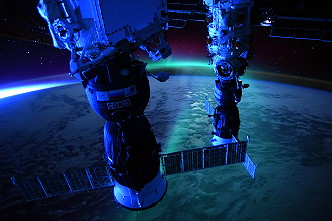 |
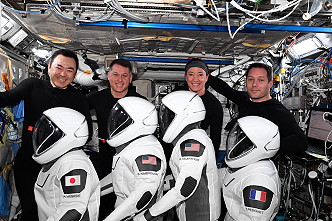 |
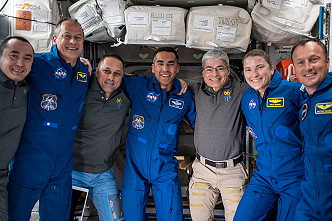 |
 |
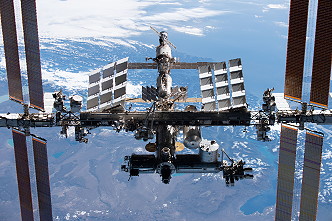 |
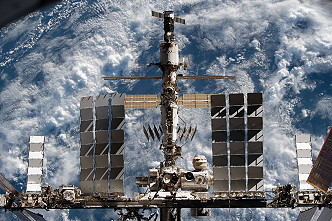 |
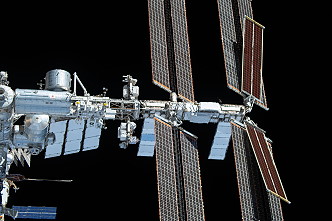 |
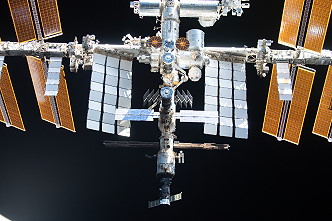 |
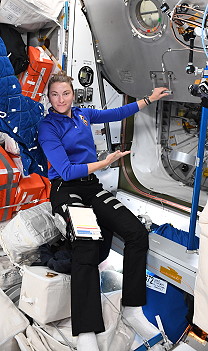 |
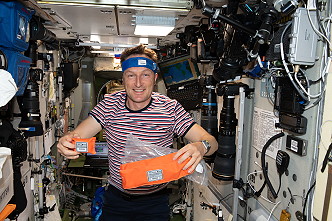 |
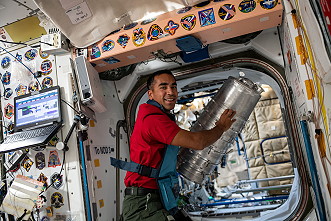 |
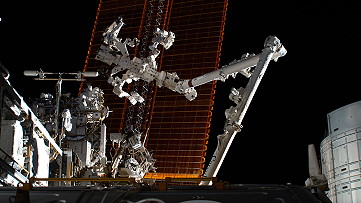 |
 |
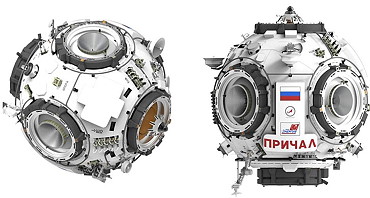 |
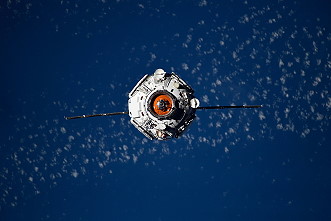 |
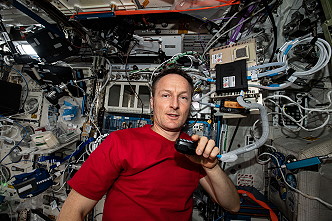 |
 |
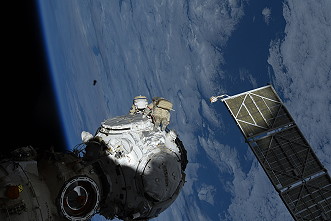 |
 |
 |
 |
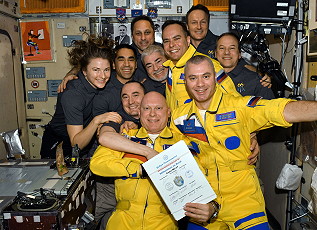 |
 |
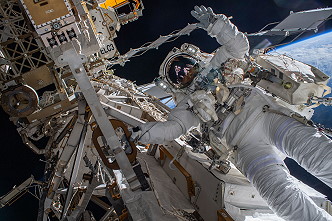 |
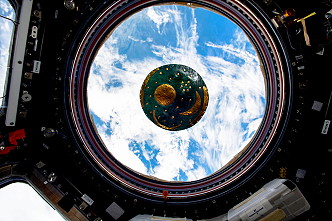 |
|
more Earth observation photos |
|
more onboard photos |
|
more EVA photos |
|
| © |  |
Last update on May 23, 2024.  |
 |